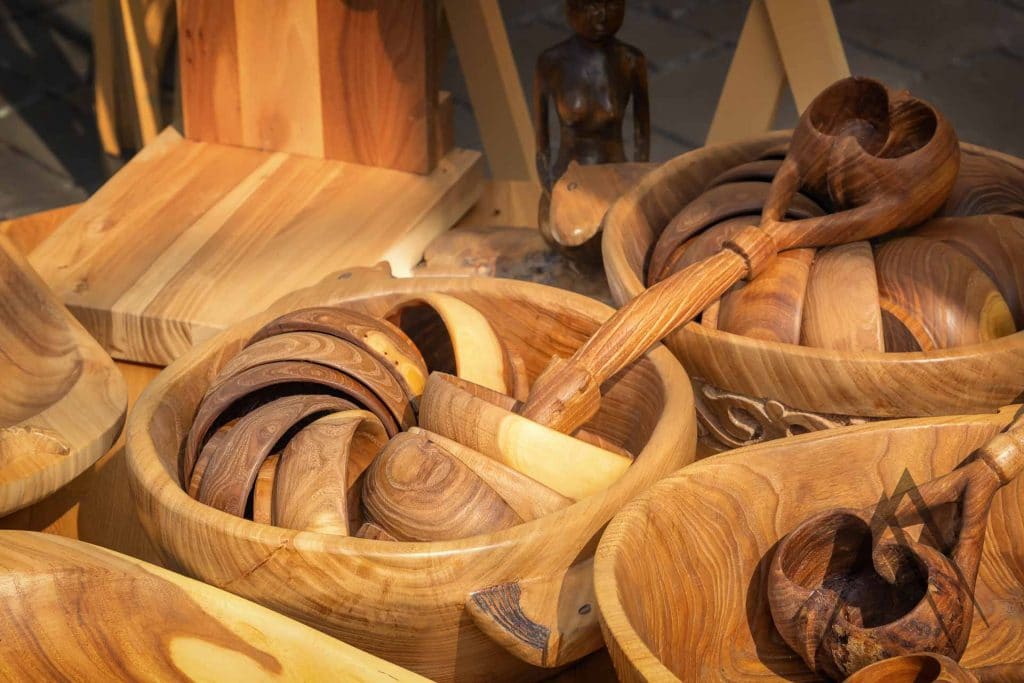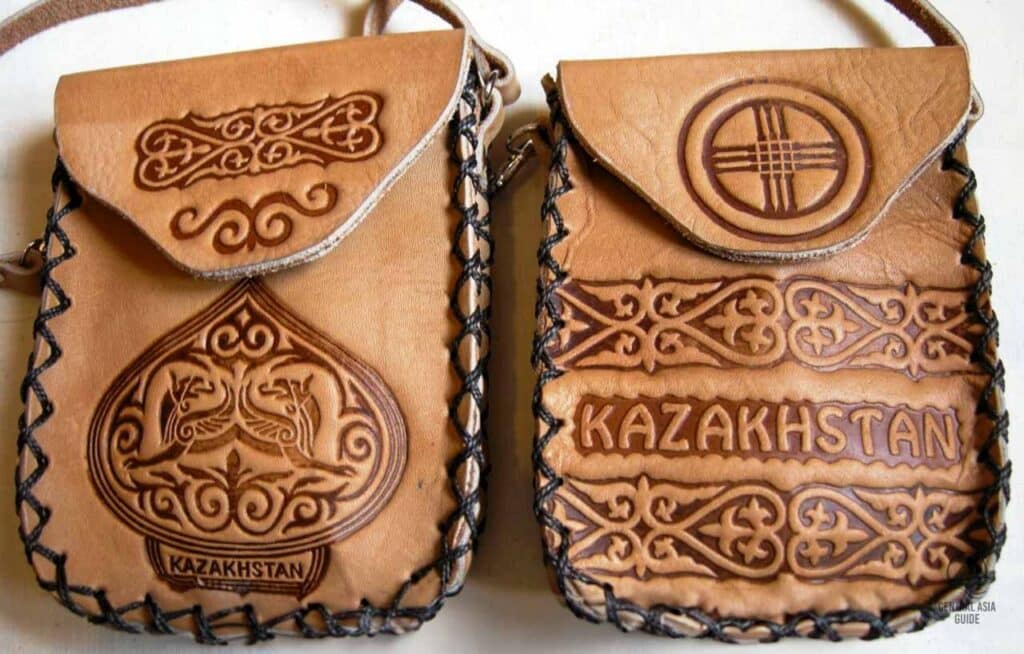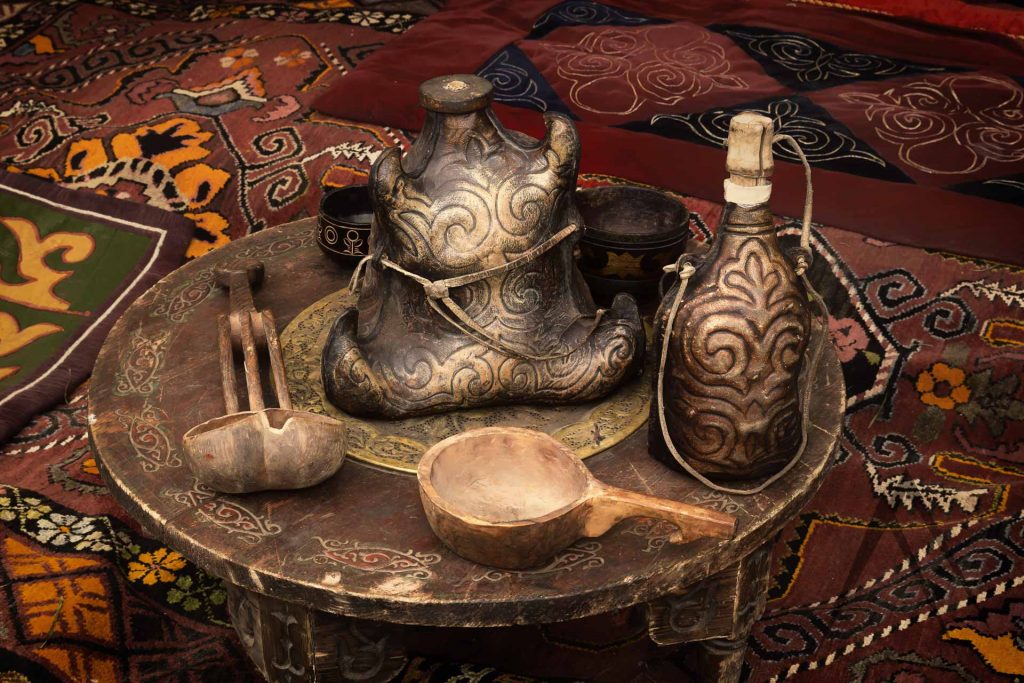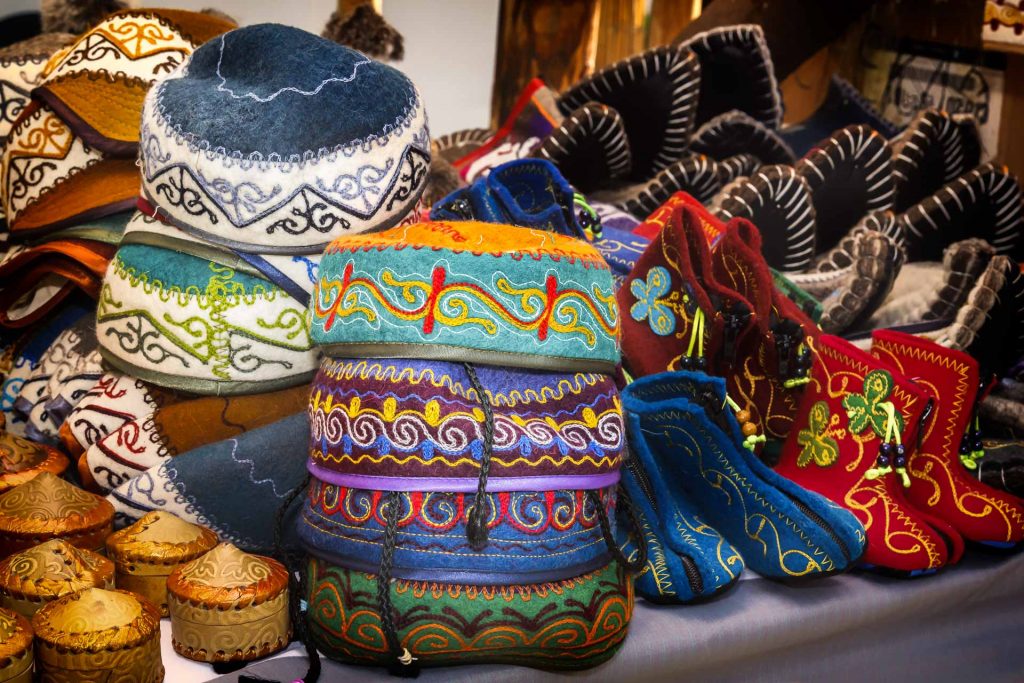Artesanía Nacional Kazaja
Kazakh National Crafts
Kazakhstan has its unique folk crafts that originated in antiquity and developed over the years. Kazakh folk crafts were formed under the influence of the nomadic culture of the Kazakh tribes. The tough and harsh life of the nomads forced Kazakh nomads to independently make everything they needed for life from what they had at hand.
Cattle breeding and hunting were the main job of the nomads, which is why products obtained from animals were used as materials for crafts: leather, wool, down, bones, horns of cattle, and small ruminants. All this led to the evolution of such crafts as felting and felt making, leather dressing, sewing leather and felt clothes, making carpets, and felt. The bones and horns of animals were used to make jewellery and some household items. Livestock leather and animal fur were used to make a wide variety of household items, from winter clothing and military armour to horse harnesses. Felt making is one of the most important and ancient Kazakh crafts.
Kazakh wood crafts
Wood craft was another significant material that nomads worked with. From wood Kazakh made dishes, weapons, furniture, and other household items, parts for saddles, handles for working tools, various lockers, and chests were made of wood.
All these items were often decorated with ornamental wood carvings. A special place in wooden crafts is occupied making Kazakh yurts and traditional Kazakh musical instruments.

Kazakh leather tradition
Leather was used to make shoes, in particular boots, because the nomads wore boots both in winter and in summer. Leather products were often decorated with embossing - this art was highly valued not only among Kazakhs but also among neighboring nations.


Kazakhs wool and felt
Felt is made from wool using various methods to compress the wool fibers to form a thick, durable, and warm material. The raw wool is placed upon cloth, wetted, and rolled tightly. It is then rolled, traditionally by being drawn behind a horse.
Felt products and processing remains as one of the most popular crafts in the decorative art of the great Asian steppes like Kazakhstan and other Central Asian countries. It was a major craft in Kazakh nomadic life as well as a significant work of women. Felt in Kazakhstan used mainly for flooring as a carpet well as covering a yurt. In addition, you can get a Kazakh felt souvenir toy, warm slippers, vests, scarves and much more.

Kiiz
El kiiz es una sencilla alfombra de fieltro de lana blanca, marrón o gris, que se utiliza como base para fabricar otros productos o para cubrir diversas partes de la yurta.
Syrmak
Syrmak es una alfombra de suelo, fabricada diseñando sobre una base (kiiz) motivos ornamentales recortados en fieltro multicolor think que luego se ajustan a la base y se cosen con encaje de colores a lo largo del contorno del motivo.
Tekemet
El tekemet es la alfombra kazaja de fieltro con dibujos de colores insertados unos sobre otros antes de enrollarlos; las distintas tribus de Kazajstán tienen cada una sus diseños.
Tuzkiiz
Tuzkiiz es una alfombra de pared, hecha cosiendo composiciones ornamentales sobre fieltro o tela de color sólido, como terciopelo o seda, y cosiéndolas después a la base de fieltro.
Artesanía metálica kazaja

Los metales son otro material que los artesanos kazajos utilizaban para la artesanía, fundiendo metal y fabricando con él herramientas, platos y armas en la Edad de Bronce. Ahora, al excavar, los arqueólogos han descubierto muchos yacimientos que han sobrevivido en el emplazamiento de antiguos asentamientos, donde se extraía mineral y se fundía hierro, plata y cobre. Muchos objetos también se fabricaban con cobre autóctono. La herrería era una habilidad esencial en la vida de los nómadas: necesitaban constantemente herraduras, estribos, piezas y arneses para los caballos, cuchillos, armas y otras herramientas. Aunque la herrería exigía del artesano un estilo de vida más asentado, por lo que las forjas se construían y trabajaban principalmente en asentamientos y ciudades de la Gran Estepa. Los nómadas solían comprar productos metálicos acabados a los herreros asentados, en lugar de fabricarlos ellos mismos. La herrería y la joyería artesanal se desarrollaron en ciudades como Sygnak, Otrar, Taraz, Turquestán y otras.
Además, los joyeros kazajos dominaban muchas técnicas: forja, cincelado, estampado y otras. El material principal para la decoración era la plata, menos a menudo el oro. La plata se utilizaba para crear anillos, brazaletes, pendientes y colgantes, detalles de ropa: hebillas y botones. Las armas, los muebles, la ropa y otros objetos domésticos solían llevar incrustaciones de plata.